What Are The Substitutes For A Broiler Pan? (Find Out Now!)

A broiler pan is an excellent method for cooking steaks, roasts, and various meats and vegetables. Broiling is similar to grilling in that it uses direct heat, but broiling employs a heat source from above, while grilling uses a heat source from below. Broiler pans are also sometimes called broiler roasters, broiling pans, or oven roasters in some recipes.
Broiler pans characteristically consist of two sections: a low-walled pan and a slotted cooking surface or broiler lid. This system allows the lower pan to catch any fat drippings without the grease flaring up and burning the food. Meanwhile, you can heat the food on the upper pan directly. Since the process of broiling diverts excess fat and grease, experts recommend broiling as a healthy alternative to roasting or baking.
If you don’t have a broiler pan, don’t sweat it! There are several things you can use instead. The main characteristics of a broiler pan are that it can withstand high temperatures and drain excess grease. To achieve those same results without a broiler pan, you can use a roasting tray with a wire rack, a sheet pan with aluminum foil, a cast iron pan, or even a baking sheet and cooling rack.
What is Broiling?
To find the best broiler pan substitute, you will need to understand what broiling is. You can use the broil setting on your oven for fast, high-heat cooking. While baking uses the side and bottom heating elements in your oven, broiling uses the heating element at the top of the oven. By exposing the food to direct heat, the process of broiling naturally drains excess fat from the meat to create flavorful, healthy dishes.
What is a Broiler Pan?
Since broiling involves heating the food directly at 550 degrees Fahrenheit, a broiler pan must withstand high temperatures. Additionally, a broiler pan needs two components, a lower pan for the juices and an upper pan for the meats (or veggies).
Broiler pans are typically made from stainless steel or porcelain enamel. The upper pan, or broiler lid, is the slotted cooking surface that allows the juices, fat, and grease to drip down into the lower pan. Since you have contained the fat and oil in the lower pan, you don’t have to worry about them igniting or burning your food.
Best Broiler Pan Substitutes
Perhaps you didn’t want to commit to buying a broiler pan just yet. Or maybe you didn’t even know what a broiler pan was. And you’re not alone– most people don’t know how to take advantage of this magical little setting. The process of broiling can sound intimidating, but it’s simple.
You don’t even need a broiler pan to make the most of your broil setting. Now that you know what a broiler pan does, you can achieve the same result with your trusty, familiar cookware in your kitchen. We’ve assembled a list of the best broiler pan substitutes.
1. Roasting Pan with Wire Rack
The ultimate broiler pan substitute is a simple roasting pan with a wire rack insert. The wire rack will allow any fat or grease to drain from the meat as it cooks, similar to the broiler lid’s slotted cooking surface. And although a roasting pan is generally deeper than a broiler pan, using a roasting pan will allow the meat to cook quickly while the rack keeps the juices separated.
2. Roasting Pan
Even if you don’t have a wire rack, your roasting pan can still make a great broiler pan substitute. The wire rack allows fat to drain from the meat, but you can create that same effect by layering your meat on top of your vegetables in your roasting pan. By making your vegetable layer the “lower pan,” you create a space to catch any juices or drippings. The result is super flavorful vegetables and tender meats.
Roasting pans are just large deep pots that are used for roasting meat in the oven. The material that is used in the construction of a roasting pan is the same as a broiler pan. In most cases it is stainless steel, but it may also be cast iron, hard anodized aluminum, or enameled steel, as all of these can withstand incredibly high temperatures.
3. Sheet Pan with Aluminum Foil
If you don’t have a broiler pan or a roasting tray, don’t panic just yet! A shallow sheet pan covered with aluminum foil can get the job done. Cover a sheet pan with aluminum foil, secure the edges, so the foil lays taut, and poke holes into the foil using a fork. Arrange your food items on top of the aluminum foil evenly so that the sheet pan will catch any fat drippings.
4. Cast Iron Pan
Broiling is not just for cooking quickly and effectively. Broiling is also great for adding a lovely char to meat or melting a top layer of cheese. Although a cast-iron pan does not have a second layer to catch drippings, it’s perfect for taking food items from the stovetop to the oven. It’s especially helpful for those foods that only need to be started or finished in the broiler.
5. Baking Tray with Cooling Rack
When thinking about an appropriate broiler pan substitute, a baking tray probably doesn’t cross your mind. But if you’re broiling meat to get the best flavor, you only need to separate the meat from its juices. And although a baking tray doesn’t have walls, it can still be utilized as the lower pan.
For a broiler pan substitute that you can improvise at home, wrap a cooling rack in aluminum foil. Poke holes in the foil to allow the fat to drain. Place the foiled cooling rack over the greased baking tray and pop it into the top rack of your oven.
As you can see, you can still use the broil setting to achieve crispy veggies, succulent meats, or cheesy casseroles even without a broiler pan. It’s easy to make your own broiler pan substitute– just create an upper rack and ensure that all components can withstand high temperatures.
Features of a Broiler Pan Substitute
Although you can use other cookware items in place of a broiler pan, the cookware that you use must have similar characteristics as the broiler pan. This means that you cannot just use any piece of cookware you have on hand. That said, here are the key characteristics that a broiler pan substitute must have:
Thick Sides
The broiler pan alternative that you use must be thick to bear the weight of the food you are cooking. Ultimately, the weight of the food will determine the type of broiler pan substitute that will work.
For instance, if you broiling a pretty large piece of steak, you may want to use a cast-iron griddle rather than a sheet pan with aluminum foil. Whereas, if you’re broiling some vegetables, a sheet pan may be a suitable choice.
Handles
Since the pan is going to be hot when the broiling process is done, it must have strong, grab handles that you can use to pull it out of the oven. Therefore, broiler pan substitutes that do not have handles, like sheet pans and baking trays, must have sides that are raised enough to let you carry them.
Non-Stick & Non-Reactive
Your broiler pan alternative should be non-reactive, meaning it won’t react with the food that is being cooked. Stainless steel cookware and cast-iron pans with an enamel finish are considered nonreactive. Whereas, aluminum, non-enameled iron, and copper are reactive. With reactive pans, acidic foods can cause damage to the pot and also transfer metal into your food.
You also want your cooking surface to be non-stick, as this will reduce the change of your food getting burnt under high heat and also simplify the cleaning process.
Conductive
The broiler pan substitute that you use must be a great heat conductor, since broiling requires extremely high heat. If it cannot withstand the high temperature, it will get distorted. So, be sure to only use cookware that is broiler-safe.
How to Utilize the Broil Setting
Almost all residential ovens have a broil setting, yet many homeowners overlook this handy feature. When grilling isn’t an option, broiling is a great substitute! Get ready for juicy, lean meats and crispy vegetables.
- Turn on your broiler. Allow 10 minutes to preheat.
- Using your broiler pan substitute of choice, put food items on the upper pan or slotted cooking surface. If applicable, fill the lower pan with vegetables to catch the fat drippings.
- Put your broiler pan substitute onto the top rack of your oven. For chicken, make sure the upper rack is positioned 5 inches from the upper heating element.
- Halfway through, use tongs to flip the meat.
- Monitor closely. You shouldn’t leave anything broiling longer than 10 minutes.
- Safely remove your broiler pan substitute from the oven.
If applicable, brush on any marinades. (You want to avoid doing this beforehand as liquid marinades can ignite under the broiler.) - Check that your meats are at a safe temperature.
- Turn off your broiler and oven. Enjoy!
Broiling Tips
Use Heat Safe Kitchenware
Remember that broiling is a high-temperature process. Use oil or a non-stick cooking spray rather than non-stick baking paper, which can burn at high temperatures. Grease your lower pan to keep juices from getting baked into your cookware, as it can be hard to clean.
Use dry seasoning ingredients over liquids and marinades as they could ignite under direct heat.
10 Minute Limit
Since the broil setting is 550 degrees, you should never leave anything on broil for more than 10 minutes. Lay all food items evenly on the broiler lid or rack and flip meats as needed.
Preheat!
You should leave ample time for your oven to preheat. Even better, preheat your broiler pan! Preheating your broiler pan ensures more even cooking for food items like steak and other red meats. When working with a broiler pan substitute, you should preheat your oven, but avoid putting only cookware with aluminum foil underneath the broiler. For example, you can preheat your roasting pan with the wire rack insert, but don’t preheat your baking tray with an aluminum foil cover.
Safety Considerations for Broiling Pans
Do NOT use glass dishes as a broiler pan substitute. Glass cookware, such as casserole dishes, is not meant to withstand very high temperatures. Exposing glass cookware to the broiler setting will result in breakage, also compromising the safety of the food.
What Pans are Safe for Broiling?
Tough metal pans are ideal when cooking with a broiler. Stainless steel is the favorite for broiler pans since it can tolerate high temperatures better than most. Additionally, stainless steel is often coated in enamel for extra protection. Aluminum broiler pans are cheaper and can warp easier.
Don’t use glass dishes or cookware with your broil setting. Glass will crack under the broiler’s high temperature. Don’t use any cookware with plastic or silicone handles with your broil setting, as they will melt. Remember that you are subjecting your broiler pan substitute to the hottest temperatures of your oven, so ensure that all components are broiler-safe.

HK Sloan is a freelance writer currently covering DIY Home Improvement, Health, and Lifestyle. Sloan is passionate about improving situations for less, whether it be working on mind, body, or home.
More by HK Sloan





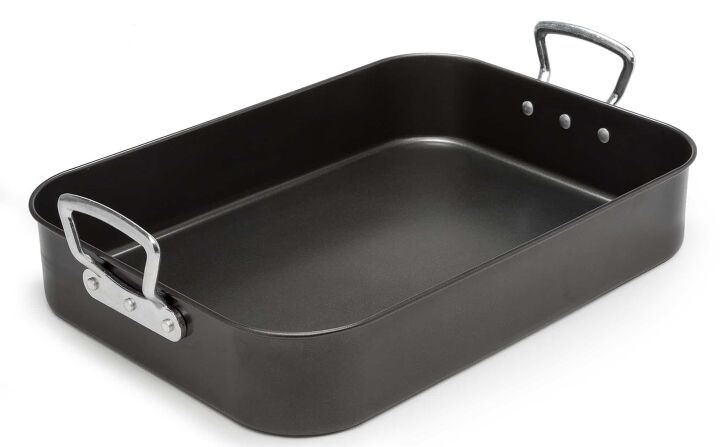









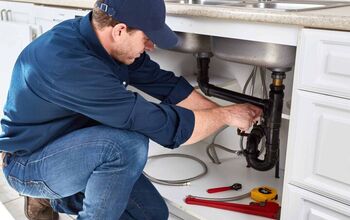
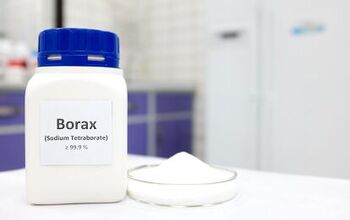
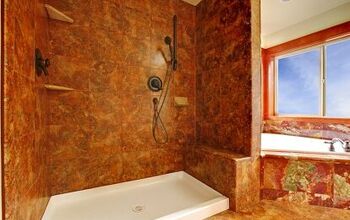
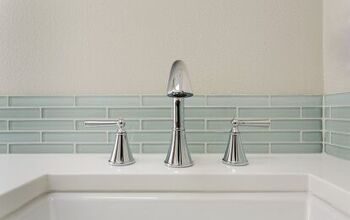




![How To Reset A Whirlpool Cabrio Washer [In 5 Easy Steps!]](https://cdn-fastly.upgradedhome.com/media/2023/07/31/9076531/how-to-reset-a-whirlpool-cabrio-washer-in-5-easy-steps.jpg?size=350x220)







